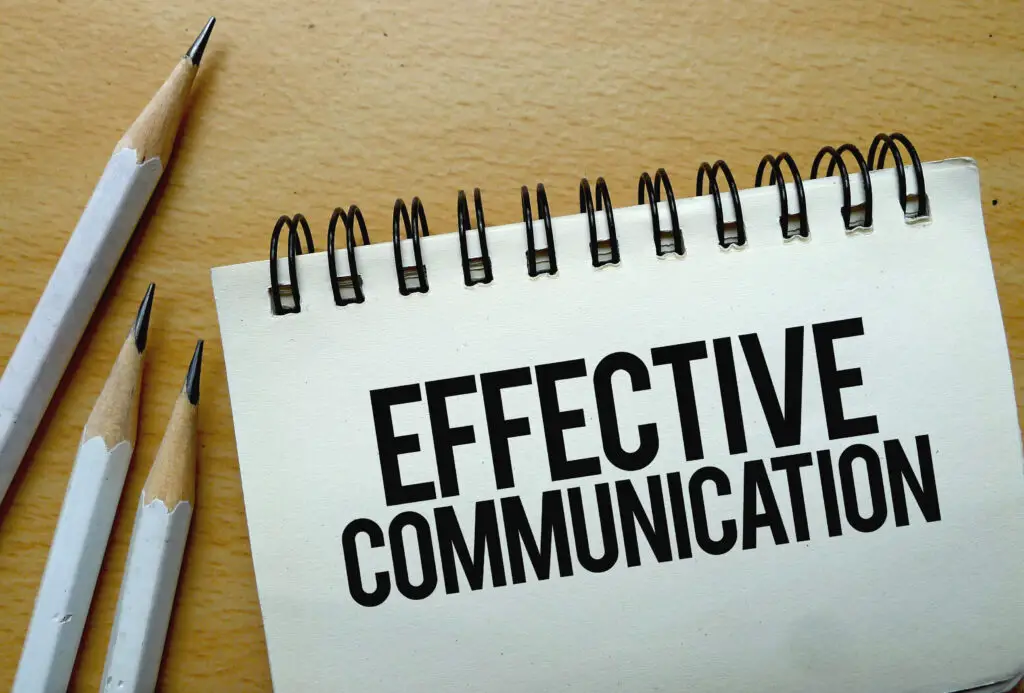It’s part of being human, the need and want to be able to express ourselves clearly and be understood and listened to. So, clear and effective communication is essential in every aspect of life, from the personal through to the professional.

Imagine yourself in the following scenarios:
- You receive a handwritten note that is completely illegible.
- You squint at the logo of a new local business, not sure of what it says due to a fanciful font.
- You get an email that is several paragraphs long and full of seemingly irrelevant details. You skim it rather than read it.
- You receive a text message that doesn’t make sense because words are missing or seem to have been replaced by auto-correction.
The above situations may spark laughter, frustration, or have serious consequences. At work, in academia, and in other business transactions, the written word takes on special importance.
The good news is that improving your written communication is not difficult or time-consuming. Below, we will consider seven simple questions to ask yourself when you put pen to paper or hands to the keyboard.
How Does It Look?
Have you ever looked away from a written text because you felt like it hurt your eyes? If so, you understand why the appearance of written communication is important.
Resumes serve as a good example of this. It has been said that employers spend about six seconds initially reviewing resumes. For this reason, job seekers try to choose the best resume format – one that has an easily readable, familiar font that is neither too large nor too small, text that contrasts well with the background, and columns and headings that naturally lead the eye to the most important information.
The appearance of your written communication also serves to build trust with your reader – or destroy it. For example, if you received an email with the subject line “YoU aRe A WiNnEr!” Would you open it? Likely not. Why? Because you recognize the incorrect capitalization as a potential indication of spam or a scam.
In a similar way, you may be reluctant to click links (or even read from) a website or blog with many “Click here” hyperlinks. But if the authors have taken the time to write appropriate and descriptive anchor text, you are much more likely to trust their suggested link.
In a similar way, the appearance of your document—be it a resume, report, email, text message, or something else—can affect how your reader feels about you, your company, or the conversation. Take a look at your document before hitting “Send” and ask yourself whether you would feel comfortable reading it.
Who Is Your Audience?
It may seem like a given that you are thinking about your reader as you write – after all, writing is like an extension of speaking, instructing, or making a request. But are you really considering the reader?
First, examine your writing to identify uncommon words – be they technical jargon, slang, or vocabulary builders.
Ask yourself, will my reader be familiar with the long or technical words I’ve used? If you are an industry professional writing to a colleague, they will likely be familiar with them. But if you are writing to a general audience, take time to explain or define unfamiliar words, or replace them with simpler terms, make your language user-friendly.
What about slang, texting abbreviations, and the like? If you are writing an informal message to a peer, these are acceptable. But slang should never be used in formal communications. Also, if your audience is older or younger than you, consider whether they will be familiar with the terms you use.
Do You Need a Paper Trail?
Especially in regards to business, it can be helpful to have a “paper trail,” even a digital one. For example, you may discuss the details of an upcoming project with a business contact via phone. Your conversation was verbal. After concluding the call, you send a brief email thanking them for their time and summarizing what you talked about. Why?
Making a written record of the conversation can prevent later misunderstandings as you both have something immutable to look back upon.
When Will It Be Read?
Many communications are designed to be immediate and short-lived – memos and text messages, for example. But if you are writing an article or book, give consideration to making your content evergreen.
Like its namesake trees, evergreen content doesn’t fade away with the passage of time. It remains relevant and useful. To keep your content “fresh,” avoid time-sensitive material or make updates as needed.
Is It Concise?
When writing is concise, it is clear and comprehensive despite being brief. Concise writing leaves out unnecessary details and irrelevant “fluff.”
Consider an example. The movie and theatrical production of Les Miserables are world-renowned, but far fewer people have read the book. It is a whopping 1,500 pages long, with a 100-page digression on the Battle of Waterloo and a score of pages describing the sewers of Paris.
The film is concise; the book is not.
In today’s fast-paced world, people are likely to scan a long block of text and miss important points. Grab their attention by indenting often and stating the most important information first. Use “word economy” and good grammar to keep sentences short.
How Will It Make the Reader Feel?
Brevity can be an advantage, as discussed above. But clipped communication can also result in misunderstandings. The “tone” communicated in text messages, for example, may seem harsher than intended by the author.
Using emojis is one way to convey the proper tone in informal communications. Emojis are even becoming more acceptable in business settings. However, they should be avoided in formal communications and documents.
But a word of caution is in order: always think about your emoji use before you hit “Send.” Some emojis are commonly misunderstood by users. And a court in Canada ruled that the “thumbs up” emoji was equivalent to signing a contract.
Did You Double-Check Yourself?
Typos, misspelled words, and grammatical errors can hurt your credibility. It’s recommendable to use a proofreading application, but don’t neglect to reread your words before you hit send. Doing so can save time on later explanations and help you avoid embarrassing situations.









0 Comments